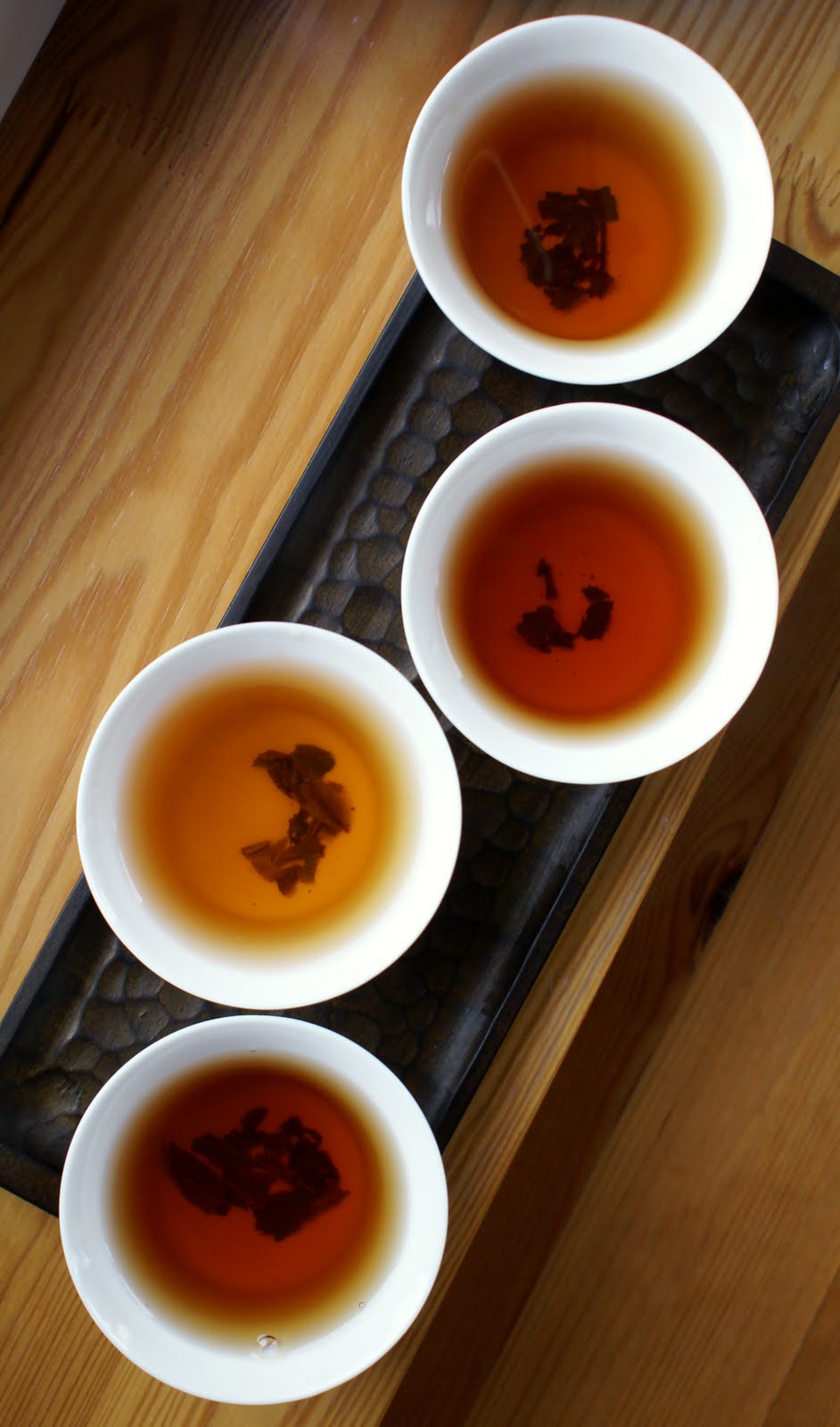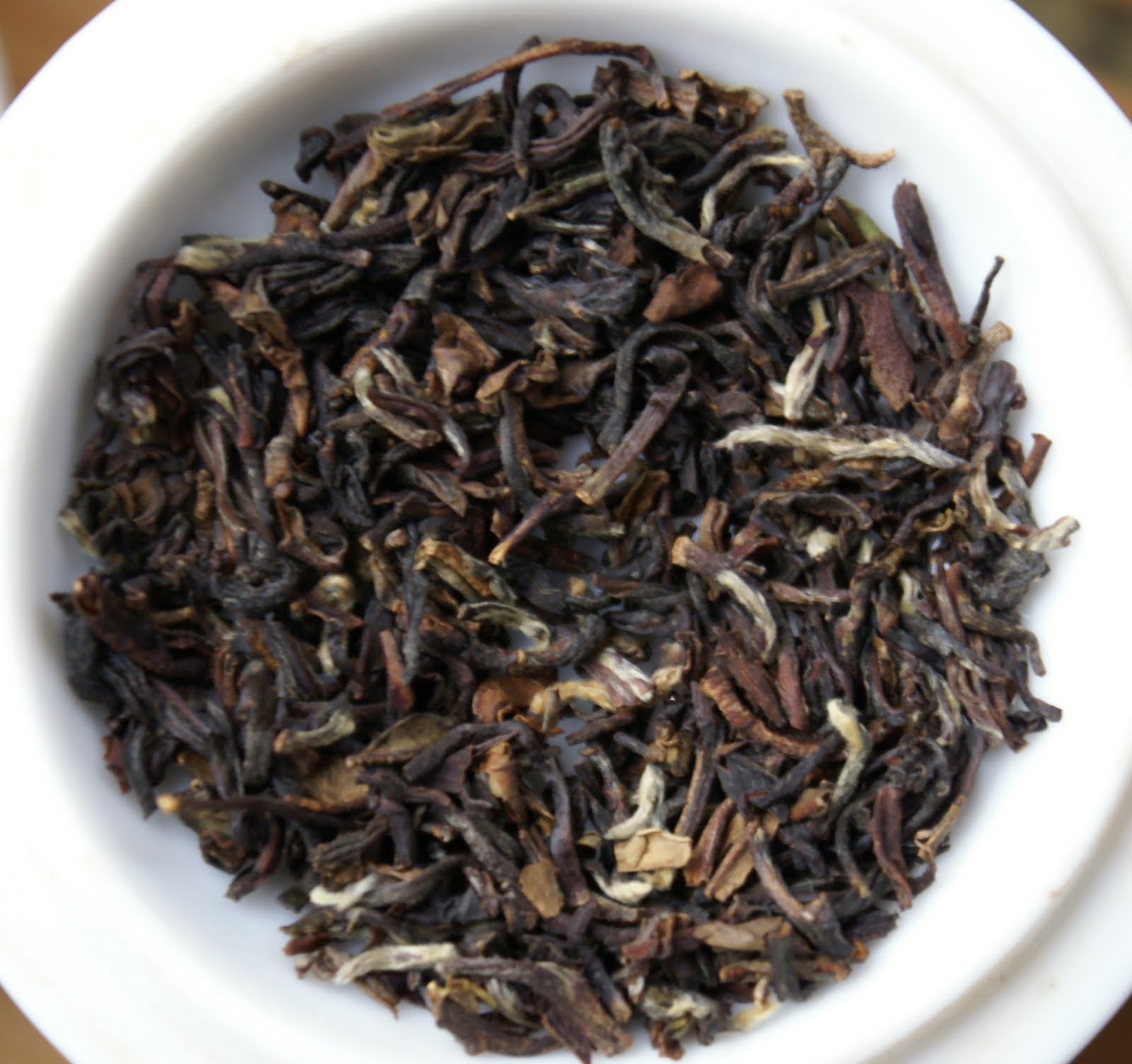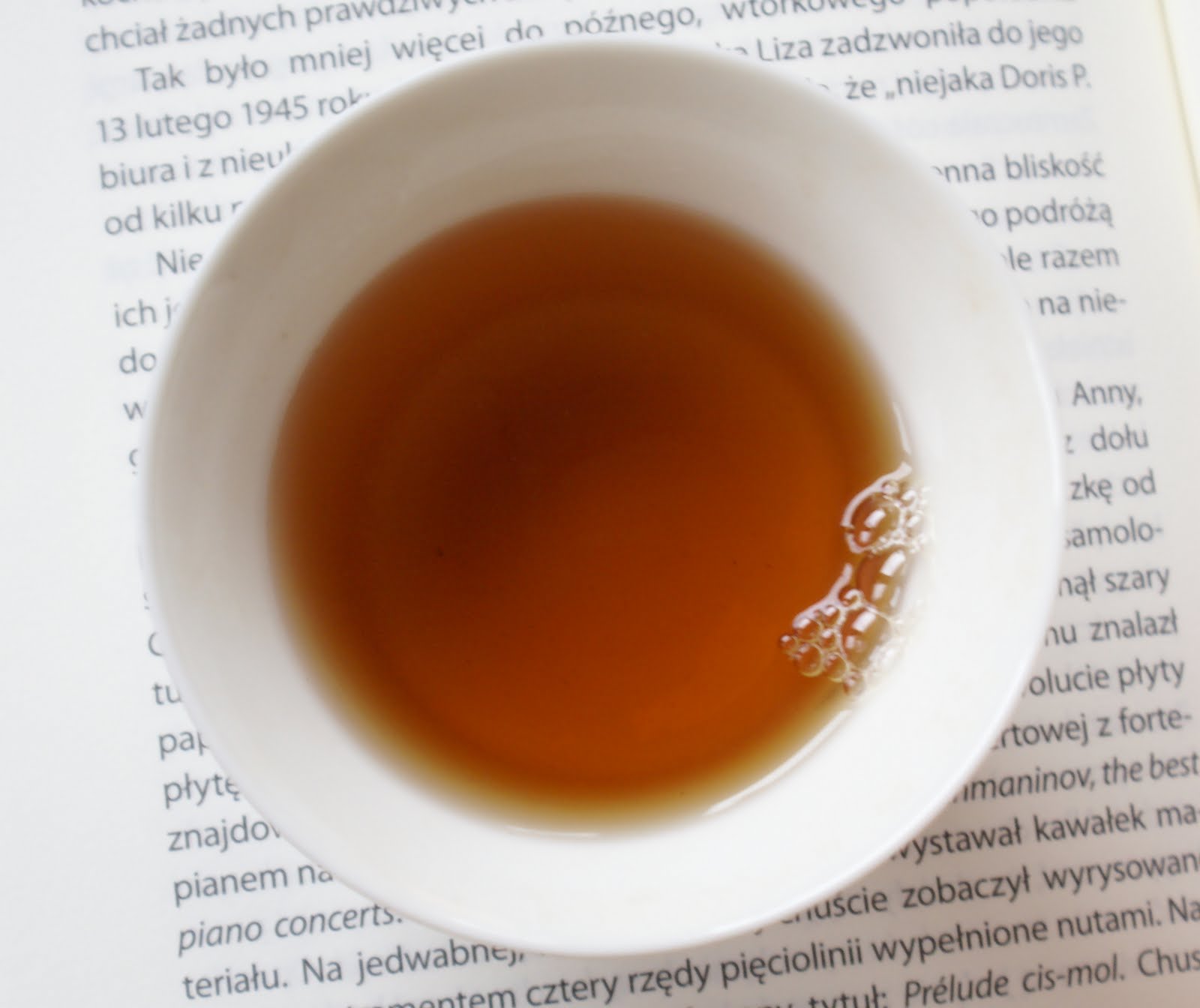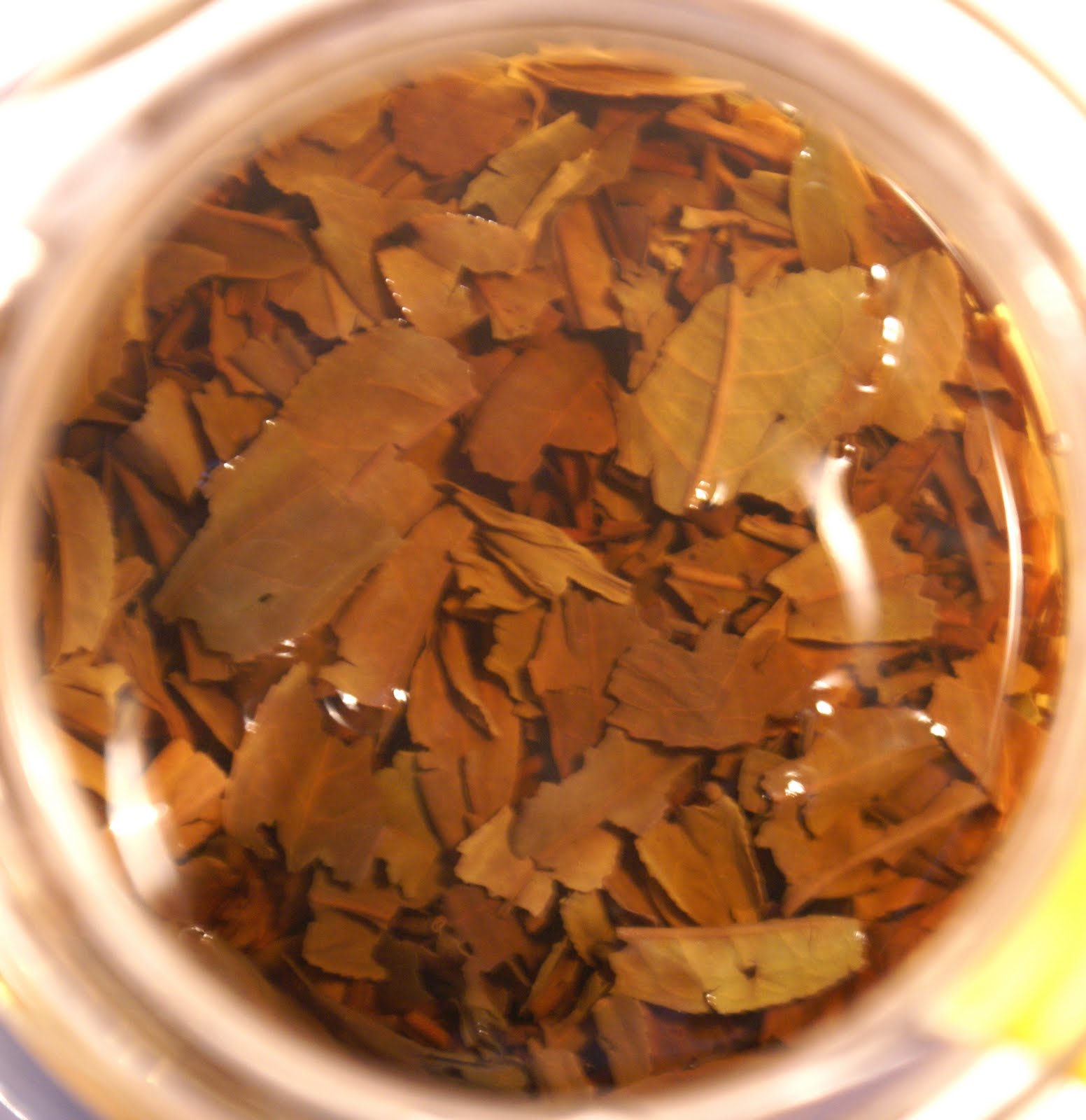2009 Darjeelings (3): Jungpana
Posted on 12 November 2009
Top to bottom: Autumn Delight, Imperial Muscatel, 2nd Flush Clonal, 1st Flush.
All brewed 5 minutes on 2g of leaf for 100ml water.
All brewed 5 minutes on 2g of leaf for 100ml water.
The independent tea estate of Jungpana might not enjoy the reputation of more centrally located gardens such as Castleton or Margaret’s Hope but has its loyal followers. I’m one of them. This year Jungpana has presented the best line-up of my (admittedly limited) 2009 tastings. Here are notes on four teas from three different flushes. (All sourced from Lochan Tea Ltd.).
The 1st Flush FTGFOP1 is simply a delightful first flush rendition of Darjeeling. The leaves are small and moderately tippy. Interestingly they show none of the fashionable green of modern Darjeeling productions: the oxidation is high, and the aroma is unfruity, quite spicy, and with enough notes of bergamot to pass for a light Earl Grey. The grade is high and the leaf selection has been very good: this is less of an indistinct mash than many a Darjeeling expired leaf.
Consequently to its highish oxidation it brews a deepish colour: although my initial brewings were warm amber-brown (as above) ,in a comparative ‘competition-style’ tasting (see photo at top of post, the 1st flush is first bottom) it’s a pretty medium-dark brown. Aroma is generic but not bad, echoing the bergamot of the nose in a lower key. A balanced cup, medium-bodied with good length and pleasantly citrusy-flavoured tannins on end. Hardly very complex but I like the balance and semi-ligthness here. However, this tea has quite some power up its sleeve and can become hefty when overbrewed but is deliciously clean with a lovely dried fruits expression. The only drawback is that my sample has deteriorated over a few months and what remains is yielding a less distinctive, walnutty tea with none of its former finesse. (I find this typical of first flush Darjeelings which really behave much like early-drinking primeur teas).
 The 2nd flush Imperial Muscatel is well-presented with largish leaves and few tips; it has a very exciting scent of milk chocolate and other complex notes of herbs and dried fruits. Reasonably deep-coloured, it is all about harmony and complexity. It exudes a sense of calmness, depth and dimension. The tannins are very fused into a broad, almost mellow whole, although the tea by no means light. There’s a ripe, summery sense of second-flushness to this, quite different to the herby drive of the above FF. The empty cup aroma is especially noteworthy: summery, warm, spicy. (The famous muscatel scent escapes me here, though).
The 2nd flush Imperial Muscatel is well-presented with largish leaves and few tips; it has a very exciting scent of milk chocolate and other complex notes of herbs and dried fruits. Reasonably deep-coloured, it is all about harmony and complexity. It exudes a sense of calmness, depth and dimension. The tannins are very fused into a broad, almost mellow whole, although the tea by no means light. There’s a ripe, summery sense of second-flushness to this, quite different to the herby drive of the above FF. The empty cup aroma is especially noteworthy: summery, warm, spicy. (The famous muscatel scent escapes me here, though). Tremendous complexity and balance but also considerable concealed power: just for fun I brewed it gongfu-style (photo above: the colour is slightly lighter but less than you would think given the infusion time relation is 5 minutes : 25 seconds) and it generated a very exciting 7 infusions with a fantastic chocolatey-roasted aroma cup, and a fair bit of potency; the earthy tannins are not far removed from a good Wuyi yancha. Remarkable tea and by some distance my favourite 2nd flush of this season.
 Another 2nd flush is the FTGFOP1 Clonal. This one is fairly light, as preannounced by the leaf which is greener and tippier than even the FF here, with an intense smokey-bergamottey aroma. The cup is light-coloured (see photo at top of page, second bottom), peachy-amber in colour, with an exciting if short-lived aroma of fresh leaves, mown grass, freshly polished wood, with subsidiary notes of fresh summer fruits (peaches). Astringency is there, ending the palate progression in a crescendo. A nice tea, much more first than second flush in character, and if not compared to the vastly superior Imperial Muscatel above, really quite good.
Another 2nd flush is the FTGFOP1 Clonal. This one is fairly light, as preannounced by the leaf which is greener and tippier than even the FF here, with an intense smokey-bergamottey aroma. The cup is light-coloured (see photo at top of page, second bottom), peachy-amber in colour, with an exciting if short-lived aroma of fresh leaves, mown grass, freshly polished wood, with subsidiary notes of fresh summer fruits (peaches). Astringency is there, ending the palate progression in a crescendo. A nice tea, much more first than second flush in character, and if not compared to the vastly superior Imperial Muscatel above, really quite good. 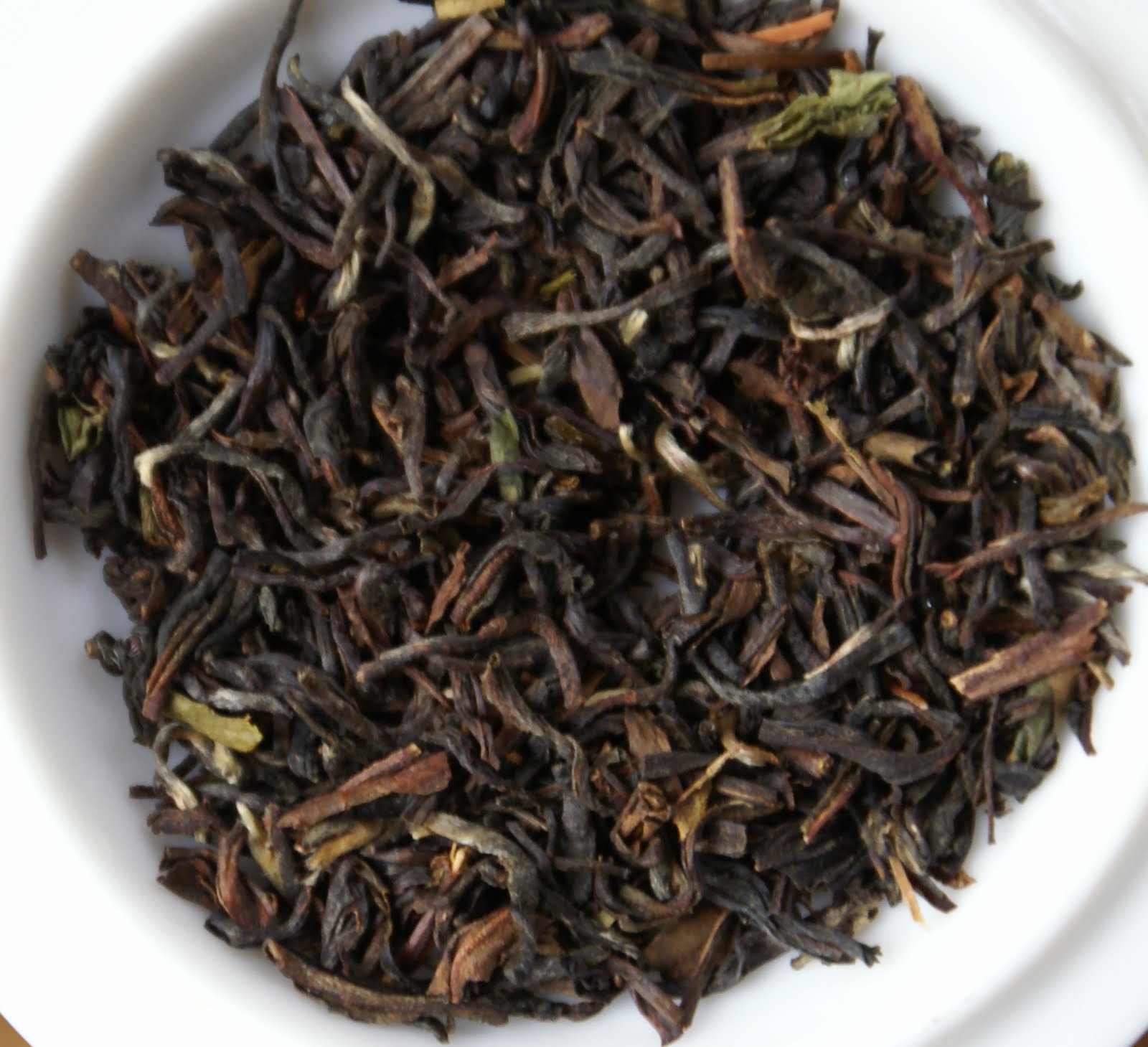 The Autumn Delight is, obviously, from the autumn flush. After two remarkable and one very good tea this one is only good. A standard Darjeeling smallish leaf with some lighter brown hues to the whole but few tips, it boasts a lovely dry leaf aroma: more humid and fresh than the second flushes, gloriously intense fresh wood and walnut notes. The infusion starts with intense fruitiness (candied fruits: mango, cherries), mild spice, good concentration but little in the way of tannins. I like the balance and the feeling of effortless quality that is usual with Jungpana but it’s the least immediately engaging of their 2009 releases: it’s rather simple and one-dimensional. After the dry leaf aroma the biggest moment of interest is in the finish which is poignantly hazelnutty. Representative of an autumnal flush in being less generous, more bone-dry, less fruity than a second flush.
The Autumn Delight is, obviously, from the autumn flush. After two remarkable and one very good tea this one is only good. A standard Darjeeling smallish leaf with some lighter brown hues to the whole but few tips, it boasts a lovely dry leaf aroma: more humid and fresh than the second flushes, gloriously intense fresh wood and walnut notes. The infusion starts with intense fruitiness (candied fruits: mango, cherries), mild spice, good concentration but little in the way of tannins. I like the balance and the feeling of effortless quality that is usual with Jungpana but it’s the least immediately engaging of their 2009 releases: it’s rather simple and one-dimensional. After the dry leaf aroma the biggest moment of interest is in the finish which is poignantly hazelnutty. Representative of an autumnal flush in being less generous, more bone-dry, less fruity than a second flush. 2009 2nd Flush Imperial Muscatel: large leaves.


